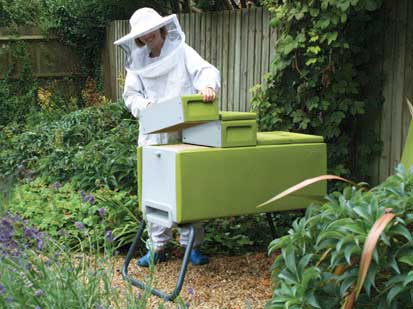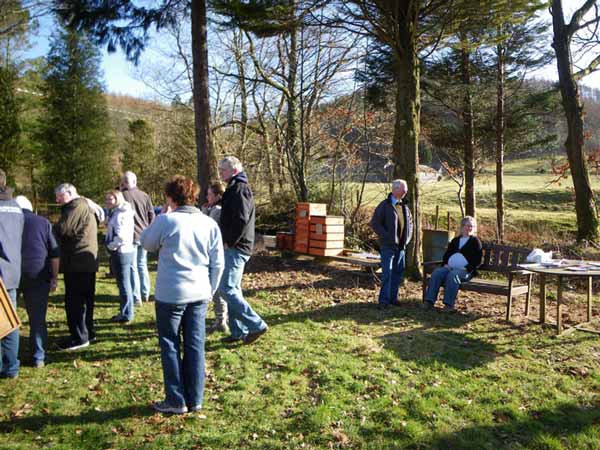Beekeeping – How is our Varroa Count?
As well as our recent test for Nosema in our bee colonies, another important aspect of beekeepeing at this time of year is to assess the levels of Varroa infestation in the hives.
Varroa
Varroa Mites are a very common, almost universal parasite of Honey Bees. The mite itself, Varroa destructor, attaches itself to the body of bees and breed within the brood cells of a colony. Although the mites can weaken the bees, they also spread diseases.
There are various ways of checking for Varroa and we placed a Varroa board into two of our hives for a week and then examined their contents. The idea is that any mites that die in the hive or are knocked off by the bees during normal grooming practises will fall through the mesh floor of the hive and accumulate on the Varroa board. If the ‘mite drop’ reaches a certain level then it is wise to treat the colony to reduce the number of mites.
Treatment can be in various forms, chemical treatments can be applied such as Api-guard and these are usually added to the hive at this time of year after removal of any honey. Physical or mechanical treatments are also popular such as coating the bees with icing sugar to increase grooming behaviour in the bees and make it more difficult for the mites to hold on to the bees. Removal of drone brood can also reduce Varroa populations due to the Varroa mites’ preference for the longer living drone brood.
From what we’ve heard almost all hives in the area have Varroa, but we checked our Varroa boards after leaving them on the hives for a week and were pleased to see that there wasn’t a mite on any of them. A varroa count of zero and therefore no need to treat the hives. That’s good news.
















I’ve been finding the same thing when using the monitoring board this summer, but I’m sure they’re in there, it’s just that at this time of year they’re mostly busy reproducing in the brood. So I’ve gone ahead and treated with Apiguard. Last year I found the mite drop got really high once winter came and they were all forced out to overwinter on the adult bees.
I’m not too sure about regularly treating for varroa. How can the bees develop some kind of resistance if we treat all the time. That’s only going to make the varroa more resistant to the treatments and our job harder in the long run.
I see your point, but in the case of Apiguard the makers say it should be difficult for varroa mites to adapt and become resistant to thymol because it has a very general effect on all cellular processes. I don’t have a garden of my own so keep my bees on a local association apiary where treating with Apiguard each year is compulsory. With so many hives in a squashed area like London it wouldn’t be fair for me to risk infecting others, hopefully being in Wales you have more space!